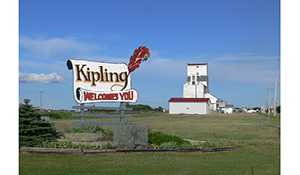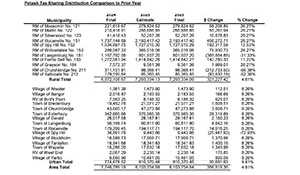Turning the truth about carbon taxation on its head
February 19, 2018, 4:42 pm

The facts are in. And the evidence proves provinces with female premiers have the fastest growing economies. No wait, that’s not it. Bigger provinces grow faster. Or maybe it’s that provinces whose names end in vowels do better that those ending in consonants.
It’s all random nonsense, of course. But that’s the level of economic analysis at play in a recent survey of provincial growth rates authored by Julia-Maria Becker and Maximilian Kniewasser, Pembina Institute directors of the Clean Economy Program and the B.C. Climate Policy Program respectively.
Our two putative economists claim, in a commentary published in Hill Times, that since the four Canadian provinces that meet the federal government’s minimum carbon price requirement of $10 per tonne—Alberta, British Columbia, Ontario and Quebec—are also the four provinces with the strongest economic growth rates over the past year, this evidence “soundly refutes the misconception that a carbon price hurts economic competitiveness and growth.”
It proves nothing of the sort.
It’s also the case that Alberta, British Columbia and Ontario, the top three provincial economies last year, all had female premiers for at least half the year. All three province’s names end in vowels. And if we add Quebec at fourth spot, we also have the four largest provinces by land mass and population.
Does any of this determine gross domestic product growth rates?
Not a chance.
There’s more to understanding the complex effects of taxation on an economy than a simple list. Consider just a few of the underlying factors.
Alberta’s nation-leading performance, for example, is due to its slow but steady recovery from the oil price crash that began in 2015. And keep in mind that the resurgent oilsands stand in direct conflict with the aims of any national carbon-dioxide emissions tax, as well as the policies of the Pembina Institute, an advocacy group hostile to carbon-based energy, and therefore, Alberta’s well-being.
B.C. and Ontario are the beneficiaries of strong labour and export markets. Quebec is finally seeing a payoff from its fiscal austerity measures and has actually lowered taxes on a net basis.
Plus, the biggest risk in the coming year to all provincial economies is that U.S. President Donald Trump will make good on his threat to pull the plug on North American Free Trade Agreement. External shocks like this inevitably overwhelm domestic policies in Canada.
Regardless, we know all forms of taxes discourage work effort, pervert consumer and business choices and transfer productive resources from the private sector to government.
Becker and Kniewasser rely on figures from RBC Economics to make their triumphant declaration that carbon taxes lead to “improving economic performance.”
While they’re correct in identifying Alberta, B.C., Ontario and Quebec as the best performers in 2017, their analysis overlooks some inconvenient facts from the rest of the document.
Next year, for example, RBC predicts that Saskatchewan will lead the country in economic growth—by a substantial margin. Not only does Saskatchewan not have a price on carbon, but former premier Brad Wall vowed to challenge the constitutionality of Ottawa’s threat to impose such a thing. And new Premier Scott Moe isn’t backing down from that stance.
And consider that Alberta’s United Conservative Party Leader Jason Kenney vows to scrap his province’s carbon tax if he wins next year’s provincial election. What would that mean to Becker and Kniewasser’s analysis? Will Alberta’s economy suddenly collapse because it no longer taxes carbon?
Beyond the logical inconsistencies of the macro view, there’s lots of micro evidence regarding the pernicious impact of carbon taxes. This includes numerous businesses both large and small that left Ontario on the eve of its cap-and-trade program because the cost of staying was simply too high.
In B.C., trade-exposed, carbon-intensive sectors such as cement and the greenhouse industry have received special payments to stave off collapse. And in draft carbon tax legislation recently released by Ottawa, large exemptions are contemplated for big industrial exporters, again signalling the devastating impact new carbon taxes can have on Canadian competitiveness. These impacts will grow as carbon taxes grow.
If Becker and Kniewasser had gone a bit further back in the RBC Economics catalogue, they would have found another report from last October noting that our four carbon-pricing provinces are set to earn $4.8 billion from their combined levies this year, a doubling of their take in 2017.
“Carbon-related revenues will increase rapidly over the coming years,” says RBC senior economist Robert Hogue.
In other words, consumers in the four provinces haven’t yet felt the full force of carbon pricing on the cost of gasoline, heating fuel, electricity, food and a host of other necessities. All of that will come with Ottawa’s plan for a national carbon tax of $50 per tonne by 2022. As everything gets more expensive, the impacts arising from these policies will surely escalate.
Then again, maybe you don’t believe taxes affect consumer behavior or business decisions. That’s what Becker and Kniewasser seem to think.



































